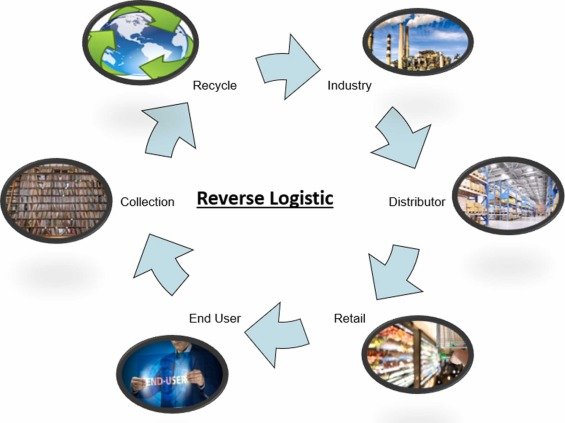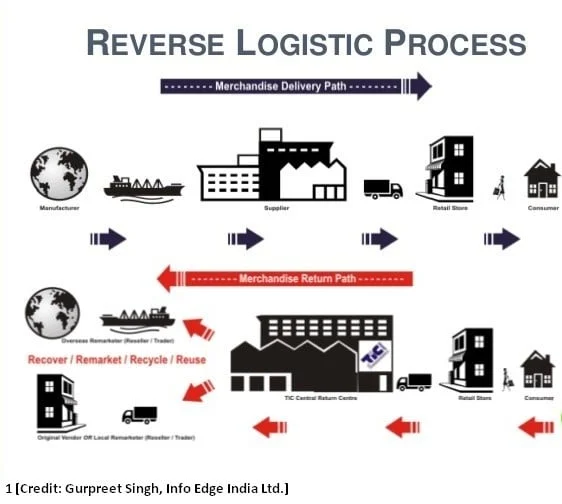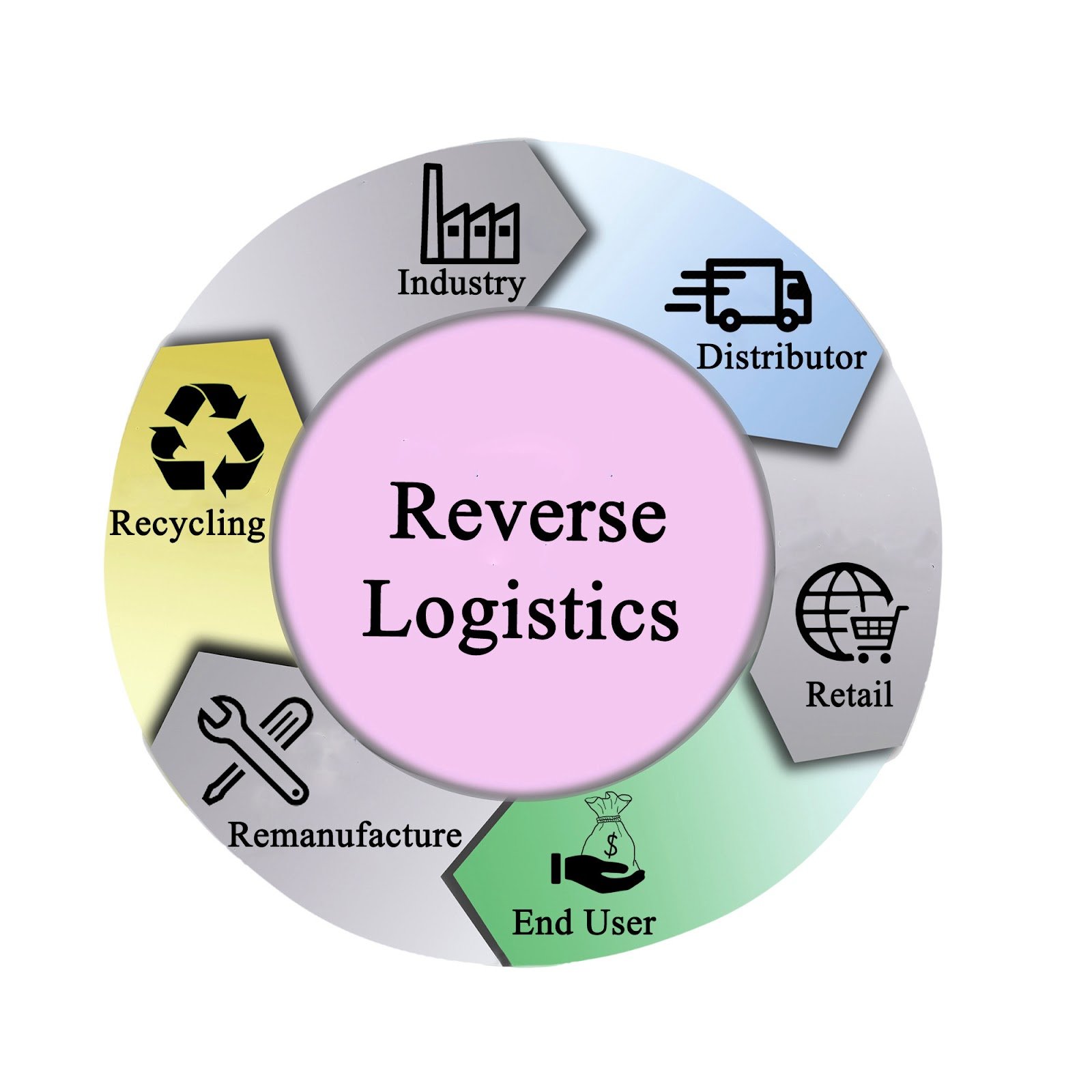In the complex landscape of the pharmaceutical sector, effective supply chain management is essential. Reverse distribution is frequently overlooked in favor of production, distribution, and patient care. However, its role is critical in ensuring a sustainable and secure pharmaceutical ecosystem. In this essay, we look at the relevance of reverse distribution, including its benefits, processes, and impact on various parties.

Understanding Reverse Distribution
Reverse distribution is the process of returning pharmaceutical medicines from their point of dispensing (such as pharmacies) to the manufacturer or approved distributors. Let us deconstruct its components:
1. Causes of Excess Inventory
Excess inventory can occur for a variety of reasons, including overstocking, product recalls, and expired prescriptions. Reverse distribution solves this problem by efficiently managing returns.
2. Reverse Distribution Processes
The reverse distribution process involves several key steps:
a. Saleable Returns
When pharmacies or other dispensers have an excess stock of unopened, unexpired pharmaceuticals, they return them to the manufacturer or distributor. These “saleable returns” can be refilled and resold, minimizing waste and financial loss.
b. Unsellable returns
Pharmacies also deal with unsold merchandise, such as broken or expired commodities. Reverse distribution ensures the correct disposal of these items, hence reducing the environmental impact.
c. Returns in a recall
During product recalls, reverse distribution allows for the safe return of impacted pharmaceuticals. This procedure helps keep potentially hazardous medications from reaching patients.
d. Consumer Prescription Disposal
Unused or expired pharmaceuticals might be dangerous if not properly disposed of. Distribution ensures proper disposal, hence protecting public health and the environment.

3. Benefits of Reverse Distribution
Let’s explore why it matters:
a. Cost savings and financial advantages
Pharmaceutical businesses can decrease financial costs from excess inventory by handling returns efficiently. Restocking saleable returns and properly disposing of unsold products help reduce costs.
b. Process Improvement Opportunities
Reverse distribution simplifies inventory management, freeing pharmacies to focus on patient care. It improves operating efficiency while reducing administrative burdens.
c. Risk Management and Supply Chain Security
Returns should be handled properly to ensure compliance with legislation and reduce hazards. It also improves the reliability of the pharmaceutical supply chain.
d. Environmental Stewardship
Reverse distribution helps the environment by promoting responsible pharmaceutical disposal. It reduces wasteful waste and pollution.
What are some challenges in reverse distribution?
Reverse distribution in the pharmaceutical industry faces several challenges that require careful consideration and effective solutions. Let’s explore some of these challenges:
1. Regulatory compliance:
Navigating different laws and regulatory norms poses substantial difficulty. The regulations for handling, shipping, and disposing of medications differ by country and location. – Ensuring compliance with standards while handling returns, particularly during product recalls, necessitates rigorous record-keeping and coordination.
2. Product Integrity and Safety:
It is vital to ensure the integrity and safety of returned medications. Contaminated or compromised items may endanger patients or the environment.
Proper storage, handling, and transportation are critical for avoiding degradation or contamination during the reverse distribution process.
3. Visibility and tracking:
Tracking returned products along the supply chain might be difficult. A lack of visibility might result in lost inventory, delays, or inappropriate handling.
Using strong tracking methods, such as barcodes or RFID tags, improves visibility and accountability.
4. Handling Unsellable Returns:
The disposal of unsaleable products (such as broken, expired, or partially used drugs) presents issues. Safe disposal procedures must comply with environmental rules.
Balancing environmental responsibility with cost-effectiveness is critical.
5. Logistical Complexity:
– Logistics for distribution are coordinated by a variety of stakeholders, including manufacturers, distributors, pharmacies, and third-party logistics companies.
Efficient transportation, reverse logistics networks, and timely pickups are critical for reducing costs and delays.
6. Financial implications:
Managing returns has an impact on finances. Restocking saleable returns can be resource-intensive, and disposing of unsold products incurs expenditures.
Finding the correct balance between cost savings and operational efficiency is difficult.
7. Communication and Education of Reverse Distribution
Educating dispensers, pharmacists, and healthcare professionals on reverse distribution methods is critical. Misunderstandings or a lack of awareness might result in blunders.
Clear communication routes and training programs are required to enable efficient operations.
8. Environmental concerns in Reverse Distribution
Proper disposal of medications is crucial to environmental management. Improper disposal can pollute water sources and damage ecosystems.
Promoting sustainable practices and raising awareness among stakeholders is a problem.
9. Stakeholder Collaboration.
Effective collaboration between manufacturers, distributors, pharmacies, and regulatory agencies is critical. Misalignment or a lack of collaboration might disrupt the reverse distribution process.
Strengthening partnerships and improving communication are constant issues.
10. Technological Adoption in Reverse Distribution
Using technology to improve distribution remains a difficulty. Some stakeholders may still use manual processes.
Using digital solutions, such as automated return management systems, can help improve accuracy and streamline operations.
To summarize, solving these difficulties necessitates a comprehensive approach that includes teamwork, technology, compliance, and a dedication to patient safety and environmental stewardship. To address these complicated needs, the pharmaceutical sector must continually evolve its reverse distribution procedures.

Conclusion
Reverse distribution is more than just a logistical operation; it is a strategic asset in the pharmaceutical sector. By accepting it, stakeholders may increase financial viability, improve patient care, and safeguard the environment. Let us realize its significance and continue to improve this critical practice for a healthier future.
Hope this article was helpful . for more, check out our previous blog post by clicking here

